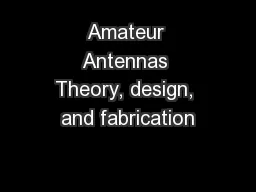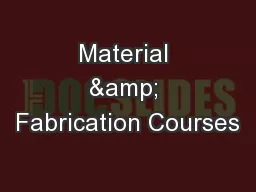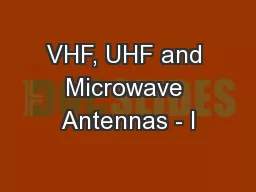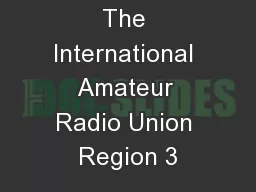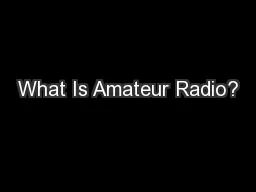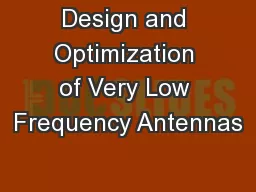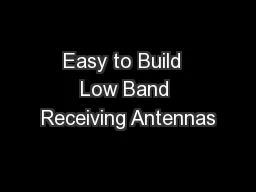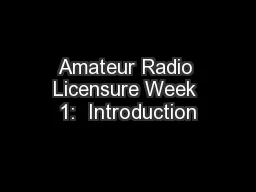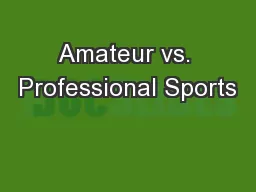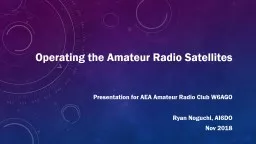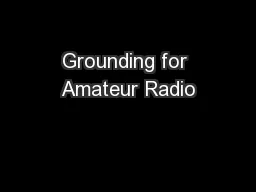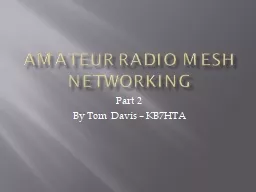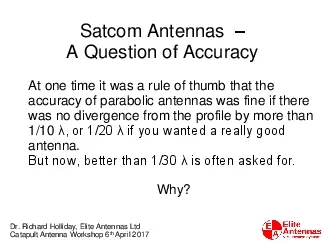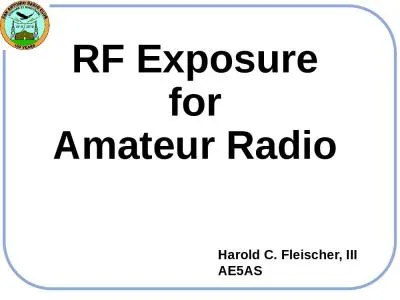PPT-Amateur Antennas Theory, design, and fabrication
Author : faustina-dinatale | Published Date : 2018-03-21
What is an Antenna An electronic device that is used either for radiating electromagnetic energy into space or for collecting electromagnetic energy for space Any
Presentation Embed Code
Download Presentation
Download Presentation The PPT/PDF document "Amateur Antennas Theory, design, and fab..." is the property of its rightful owner. Permission is granted to download and print the materials on this website for personal, non-commercial use only, and to display it on your personal computer provided you do not modify the materials and that you retain all copyright notices contained in the materials. By downloading content from our website, you accept the terms of this agreement.
Amateur Antennas Theory, design, and fabrication: Transcript
Download Rules Of Document
"Amateur Antennas Theory, design, and fabrication"The content belongs to its owner. You may download and print it for personal use, without modification, and keep all copyright notices. By downloading, you agree to these terms.
Related Documents

